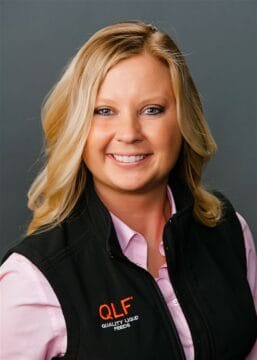by Chelsey Saevre, Cow/Calf Field Tech Support
Beef production in the U.S. continues to face several challenges, of which, feed cost represents the largest portion. Historically, a substantial amount of effort has been made to fully understand how nutrition impacts the growth and performance of the offspring during the postnatal period. In reality, a feedlot calf spends approximately 40% of their entire lifetime within the uterus being nourished solely by the placenta. Recent data would suggest that the maternal environment in which this calf resides may influence offspring growth, carcass composition and meat quality.
Maternal nutrient demands throughout mid gestation are lower than any other period of pregnancy. This phase of gestation provides a window of opportunity to put needed condition back on cows prior to calving. In utero, further growth and development of major fetal organs and reproductive tissues continue to occur. Most notably, fetal skeletal muscle and adipose tissue development begin.
Myogenesis
Primary myogenesis, or formation of muscular tissue occurs between two to eight months of gestation. Muscle fiber development has a lower priority in nutrient partitioning compared with the brain and heart (Bauman et al., 1982); which makes the process sensitive maternal nutrient deficiency. For all classes of livestock, all muscle fibers are formed before birth. After a calf is born, there are no net increase in the number of muscle fibers. Postnatal muscle growth is due to an increase in diameter and length of existing muscle fibers (Glore and Layman, 1983; Greenwood et al., 2000). Proper maternal nutrition throughout mid gestation can potentially improve muscle fiber development and carcass value.
Adipogenesis
In addition to skeletal muscle development, adipogenesis also begins in mid gestation. Adipocyte cells are responsible for fat deposition in the offspring. The amount of fat mass an animal has is determined by the number and size of adipocyte cells formed in utero. Approximately 80% of fetal adipose tissue is deposited in the final few weeks of gestation, but the development of these adipocyte cells begins in mid gestation. Adipocyte development is sensitive to maternal nutrition. Proper maternal nutrition throughout mid gestation is important for altering adipocyte development, ultimately impacting offspring marbling potential and carcass value.
Underwood et al. (2008) reported that protein supplementation during the period of 60 to 180 days of gestation enhanced lean growth and lean:fat ratio in offspring. Additionally, Underwood et al. (2010) observed that offspring born to cows assigned to improved pasture during mid gestation had improved growth performance and meat quality compared with those born to cows assigned to native range pasture (Table 1). These data support that maternal nutrition throughout mid gestation improves lean growth and potential marbling in offspring.

Conclusion
Reduced growth rate and feed efficiency pose an economic impact for the beef industry. Plane of nutrition throughout mid gestation may alter muscle and fat tissue development, which may affect carcass quality and producer profitability.
Nutrient supplementation promotes uterine environment and fetal development, especially muscle development due to its low priority in nutrient partitioning. As pasture conditions decline during mid gestation, QLF cow/calf supplements are formulated to provide nitrogen to rumen microbes to enhance intake and digestibility of forages to support herd condition as well as continual fetal growth and development.
Download the printable article here!
Citations
Bauman,D. E., J. H. Eisemann, and W. B. Currie. 1982. Hormonal effects on partitioning of nutrients for tissue growth: role of growth hormone and prolactin. Fed. Proc. 41:2538-2544.
Funston, R.N., D.M. Larson & K.A. Vonnahme. 2010. Effects of maternal nutrition on conceptus growth and offspring performance: Implications for beef cattle production. J. Anim. Sci. 88:E205-E215.
Greenwood, P.L., A.S. Hunt, J.W. Hermanson, and A.W. Bell. 2000. Effects of birth weight and postnatal nutrition on neonatal sheep: II. Skeletal muscle growth and development. J. Anim. Sci. 78:50–61.
Glore, S.R., and D.K. Layman. 1983. Cellular growth of skeletal muscle in weanling rats during dietary restrictions. Growth 47:403–410.
Underwood, K. R., J. M. Kimzey, J. Tong, P. L. Price, E. E. Grings, B. W. Hess, W. J. Means, and M. Du. 2008. Gestational nutrition affects growth and adipose tissue deposition in steers. In: Proceedings of Western Section of American Society of Animal Science, University of Wyoming, Laramie, 24–26 June 2008. 59. p. 29–32.
Underwood, K. R., J. F. Tong, P. L. Price, A. J. Roberts, E. E. Grings, B. W. Hess, W. J. Means, and M. Du. 2010. Nutrition during mid to late gestation affects growth, adipose tissue deposition and tenderness in cross-bred beef steers. Meat Sci. 86:588-593.

